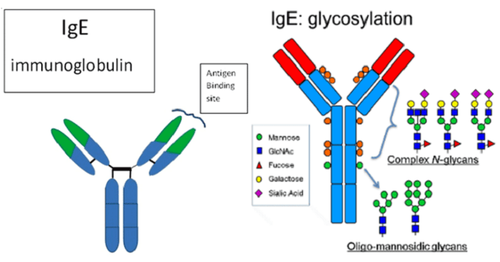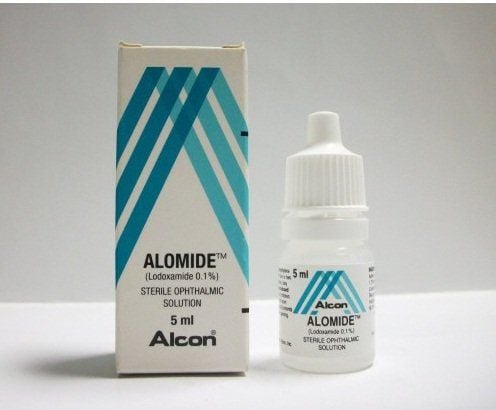This is an automatically translated article.
What is Tanacelest? Tanacelest is commonly used for severe allergic reactions such as severe pollen or dust allergy, chronic allergic rhinitis, severe bronchial asthma, atopic dermatitis, contact dermatitis, allergic conjunctivitis, and allergic conjunctivitis. acute urticaria...
1. Ingredients of the drug Tanacelest
Tanacelest medicine has 2 main ingredients: 0.25mg Betamethasone and 2mg Dexlorpheniramine Maleat. In which:
Betamethasone is a synthetic corticosteroid with strong analgesic and anti-inflammatory effects (7 times more than Prednisolone). When used in high doses has an immunosuppressive effect; Dexchlorpheniramine is the D-isomer of Chlorpheniramine, which has twice the antihistaminic effect of Chlorpheniramine; Antiallergic by competitive blocking of cellular histamine H1 receptors. Tanacelest has a very strong anti-inflammatory effect, so it has a high therapeutic effect.
2. Instructions on how to use Tanacelest Drugs Tanacelest used orally, reference dosage:
Adults and children >12 years old: Take 1 tablet/time, 3-4 times a day; Children from 6-12 years old: Take 1 capsule/time (morning and evening). *Note:
Do not use Tanacelest for children under 6 years old because the dosage form is not suitable; It is recommended to use the lowest effective dose, which can be reduced to 2 days/1 tablet; Do not treat acute urticaria for more than 10 days. Discontinuation of the drug does not require a dose reduction.
3. Tanacelest . side effects
3.1. Betamethasone side effects
Common side effects:
Potassium loss, sodium retention and water retention, increased appetite; Irregular menstruation ; Cushing's syndrome; Inhibits the growth of the fetus and of young children; Reduced glucose tolerance, potential diabetes risk. Increased use of insulin or glucose-lowering drugs in people with diabetes; Muscle weakness, muscle loss, osteoporosis, skin atrophy, sterile abscess. Uncommon side effects:
Refreshing, mood swings, major depression, insomnia; Glaucoma, cataract ; Abdominal distention, peptic ulcer, even gastric perforation or bleeding; Pancreatitis, esophagitis. Rare side effects:
Angioedema, urticaria, atopic dermatitis; Benign intracranial hypertension; Anaphylactic or hypersensitivity reactions, hypotension or shock-like symptoms. 3.2. Side effects due to Dexchlorpheniramine Maleat Common side effects:
Central nervous system depression causing reactions such as: fatigue, drowsiness, dizziness, loss of coordination; Blurred vision, headache, psychomotor disorders; Dry mouth, thick phlegm; Urinary retention, constipation, increased gastric reflux. Uncommon side effects:
Nausea and vomiting, diarrhea, epigastric pain; Arrhythmia, palpitations; Rash, with hypersensitivity reactions such as: bronchospasm, angioedema and anaphylaxis. Rare side effects:
Agranulocytosis, thrombocytopenia, leukopenia; Hemolytic anemia ; Sweating, myalgia, convulsions, extrapyramidal effects. Depression, sleep disturbance, confusion, tinnitus, low blood pressure, hair loss. If during the use of Tanacelest, you see any adverse effects, you should immediately take the patient to the medical center for timely treatment.
4. Notes when using Tanacelest Do not use Tanacelest for the following cases:
Hypersensitivity to active ingredients Betamethasone, Dexlorpheniramine or any ingredient in the formula; People with diabetes, mental illness, Patients with peptic ulcer, peptic ulcer, pyloric - duodenal obstruction; Systemic bacterial, viral and fungal infections; Have an acute asthma attack; Have symptoms of prostate enlargement; Narrow angle glaucoma; Bladder neck obstruction; Newborns and premature babies; Women in the last 3 months of pregnancy or breastfeeding; People who are taking MAO inhibitors within 14 days, up to the time of drug treatment. Other special notes:
Must be very careful when using the drug for the following subjects: congestive heart failure, recent myocardial infarction, hypertension, diabetes, epilepsy, hypothyroidism, kidney failure, liver failure, osteoporosis, peptic ulcer, psychosis,... Do not use in patients with active or latent tuberculosis, except in rare cases in case of adjuvant treatment with anti-tuberculosis drugs; Do not use in combination with live vaccines for at least 3 months after taking the drug. 5. Tanacelest Drug Interactions Due to the Betamethasone component, caution should be exercised when combining Tanacelest with:
Paracetamol : Because it may increase the production of Paracetamol's metabolites, which are toxic to the liver; Tricyclic antidepressants : There is an increased risk of psychiatric disorders; Oral Antidiabetic Drugs or Insulin: Because glucocorticoids can increase blood glucose levels, the dose of one or both drugs may need to be adjusted; Phenobarbital, Rifampicin, Phenytoin or Ephedrine: May increase metabolism and decrease the therapeutic effect of the drug; Glycoside digitalis: There is an increased risk of arrhythmia or digitalis toxicity associated with hypokalemia; Non-steroid anti-inflammatory drugs or alcohol: Increased risk or exacerbation of peptic ulcer disease; Coumarin-based anticoagulants: May alter the effect of this drug; Salicylates: By increasing the concentration of this substance in the blood; Aspirin: in case of decreased blood prothrombin. Due to the composition of Dexchlorpheniramine Maleat, caution should be exercised when combining Tanacelest with:
MAOs inhibitors: Prolong and increase the anti-acetylcholine anti-secretory effect of antihistamines; Alcohol or sedative drugs: May increase CNS depression. To ensure safety and effectiveness during treatment with Tanacelest, tell your doctor about all medications, supplements you are taking and any other medical conditions you have.
Please dial HOTLINE for more information or register for an appointment HERE. Download MyVinmec app to make appointments faster and to manage your bookings easily.













